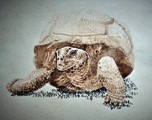Water it matters > page
Nesting
Hoping to offer a secure local for our local Brown honeyeaters I thought nesting boxes. Imagine having to go around with the name Lichmera indisticta.
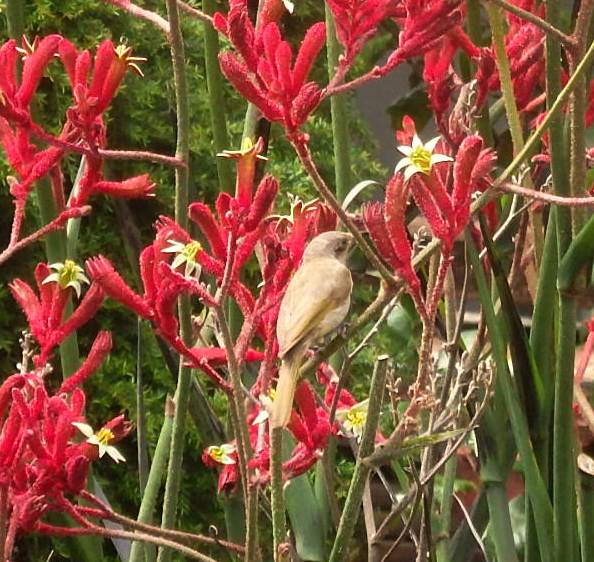
‘Fires create nesting hollows in trees,’ it is said. Our forests in Australia have been burned repeatedly by hot fires.
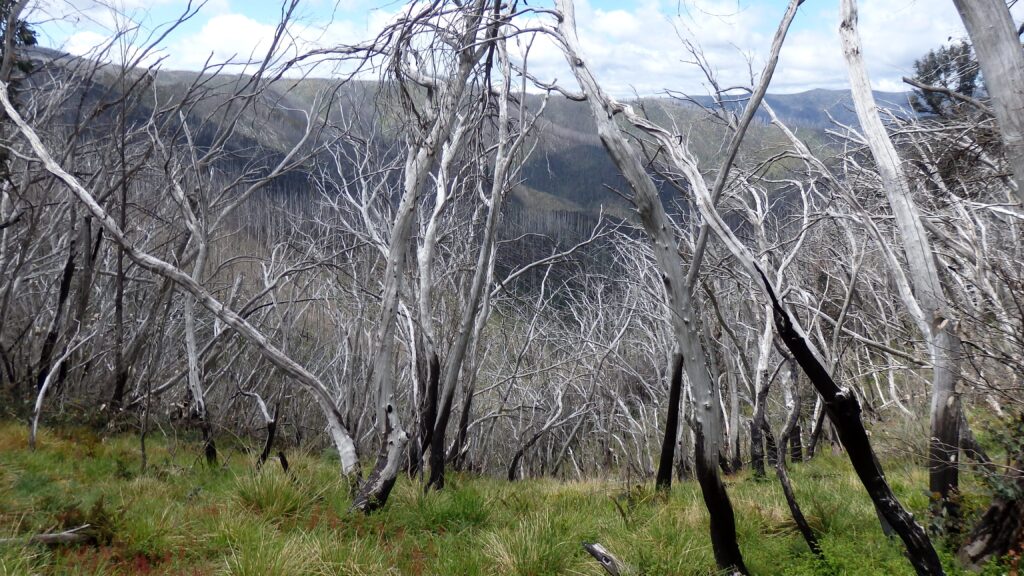
Our gardens have become the new forests, we need to provide spaces for other species. What could you find to shelter a creature? I’m thinking cardboard, everyone shoeboxes around. What matter if it only lasts one season; that is all it has to do. You could improve on them each season. The remains becoming mulch as they decay*.
My father feeds birds, I have made nesting boxes as Christmas presents. Form some old decking boards, I’ve had to use six because they are not very wide, just glued together with wood glue. Caps screwed on to ends of boards. Drilled holes and inserted dowels for rungs.
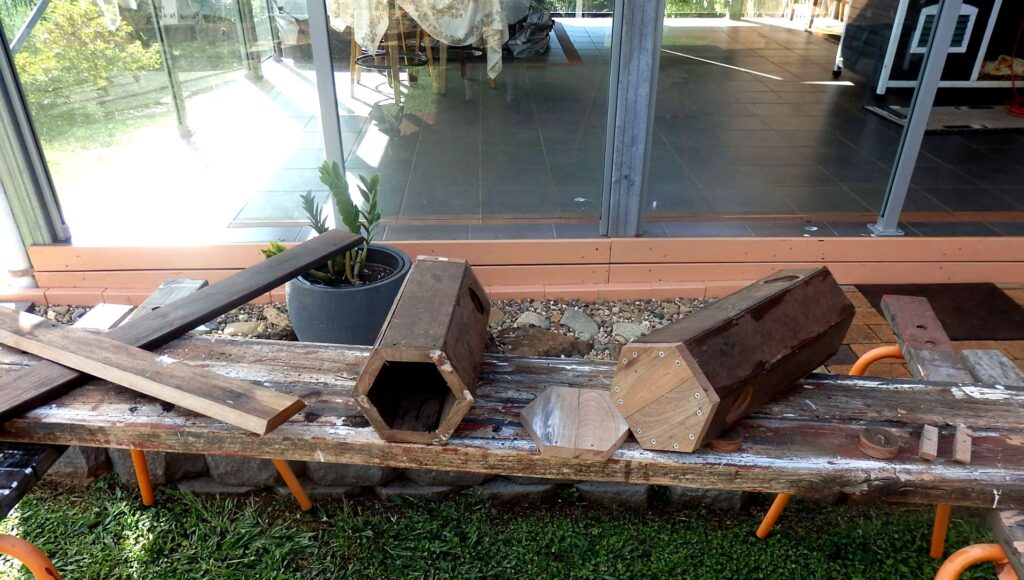
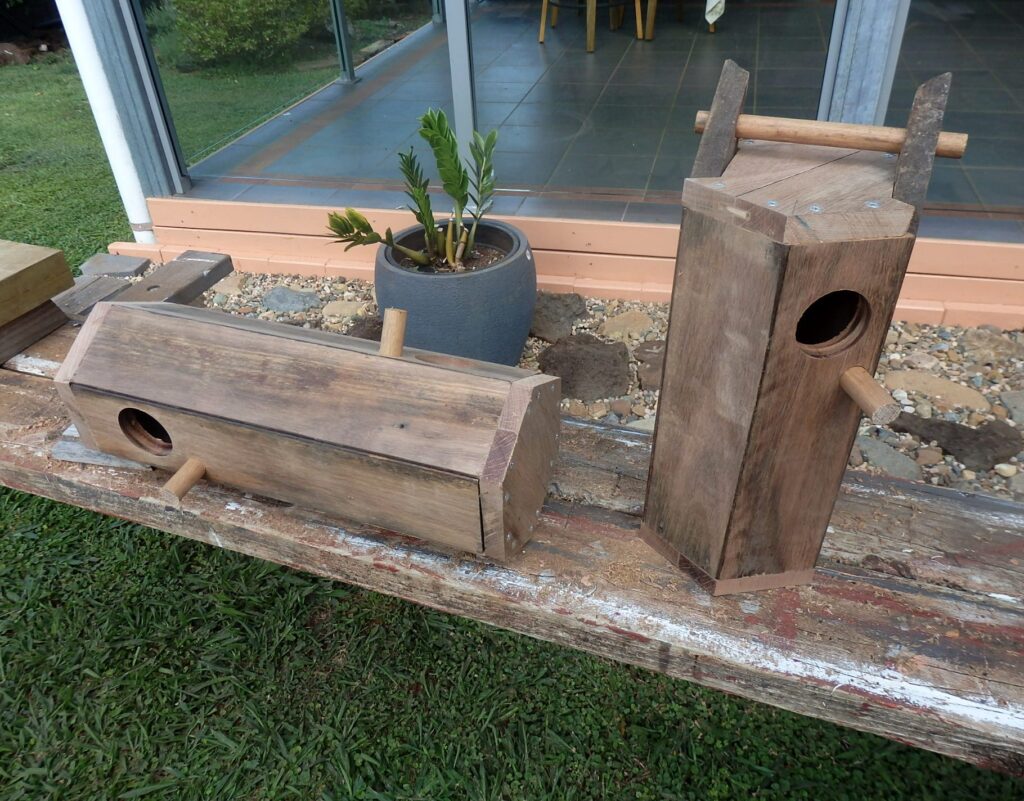
- *If all products rotted down to mulch at the end of their life, a tremendous amount of energy would be saved.
- Had a hornet show me a lot of interest while making these boxes. Do hope she/he chooses alternate accommodation.
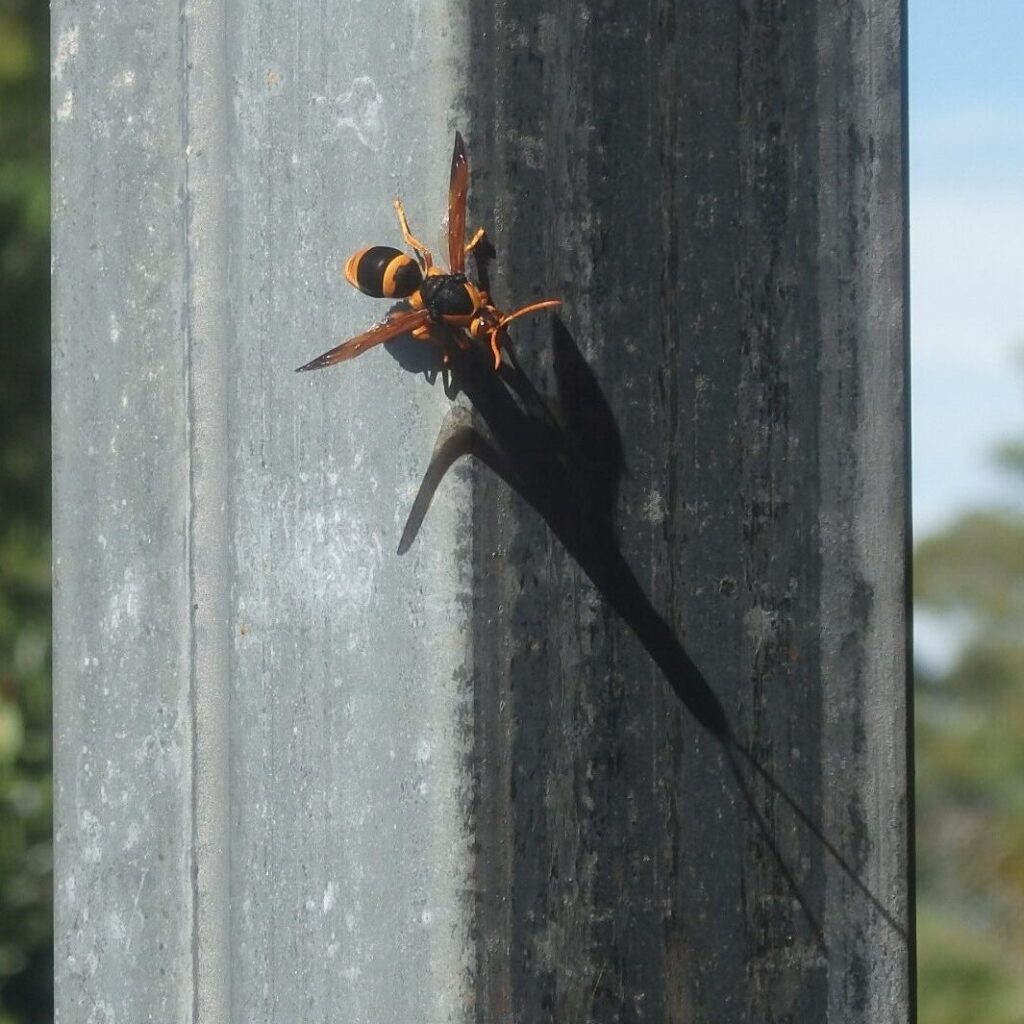
posted 21st Dec. 2021 by Ian McKay Nunn
Fungus Production
Grass Cutter Ants
The species has different ants for various jobs. The porters seem to identify the grass. The cutters with large muscular heads and jaws are less mobile so it is efficient for them to be lead on the shortest route to the target for the day. The porters lift the substantial grass blades vertically to carry them back to the labyrinthine nest for the process workers.

The harvested grass is cut into squarish sections for easier handling. Then a particularly large worker coats the leaf portions with an antibiotic against bacterial competitors to the fungus that feeds on the grass.
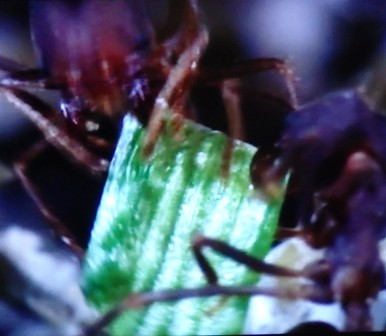
I would guess the coating applied by the ants also contains an enzyme that assists the breaking down of the grass for the fungus. The ants feed off the fungus at will, but it produces a significant volume of carbon dioxide.
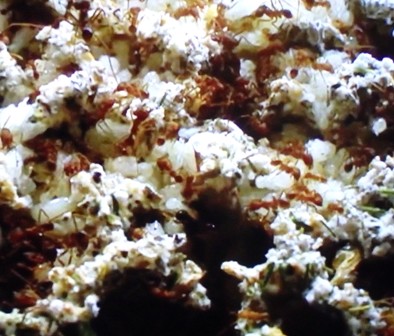
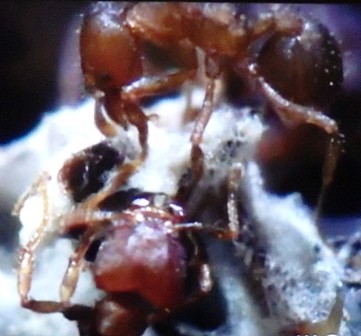
The nest has been dug out with length vertical shafts. At the surface the entrances have been funnel shaped and some open toward and others away from the prevailing wind. The breeze draws out the CO2 and feeds fresh air into the nest.
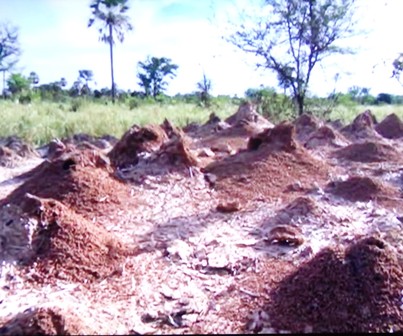
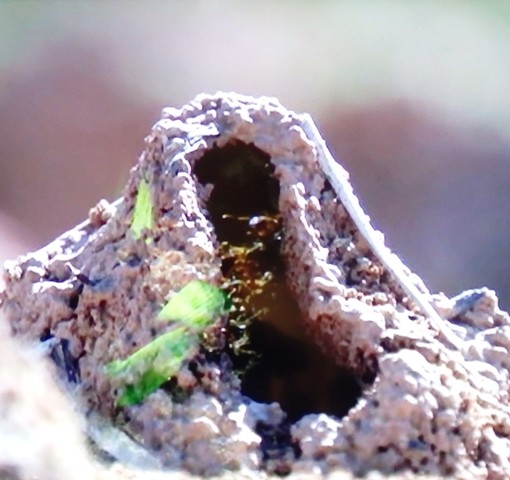
posted 18th Dec. 2019 by Ian McKay Nunn
Tumble Weed ATV
Brunsvigia bosmaniae a flambouyant geophytes (storage organs usually perenial that enable plants to survive adverse conditions) of the family found along the dry coast of the Cape Province, South Africa. It receives cool winter rains on particularly well drained high ground with some clay.1
The plant produces broad, tongue-shaped dark green deciduous leaves that hug the ground when mature, and grows out of a coppery spherical bulb.
At night the flowers are especially fragrant, when they are pollinated by moths. Like other members of the Amaryllidacae family, they form large spherical fruiting heads which detach from the plant at maturity and tumble around the landscape dispersing their seed, driven about by wind.
The bulbs have been steeped in solution for medicinal and euphoric purposes. However too much of the Brunsvigia alkaloids and may be extremely toxic.2.3.

The ease with which these seed heads traverse the rough ground at speed emphasized their appropriateness. They roll effortlessly; their broad seed compartments make no intrusion into the ground, and they can turn on a point. Wheeled vehicles: compact soils, are restricted to tracks, create pot holes, and bounce over rocks. The form of the B. bosmaniae seed transport ball is elegantly suited to its purpose.
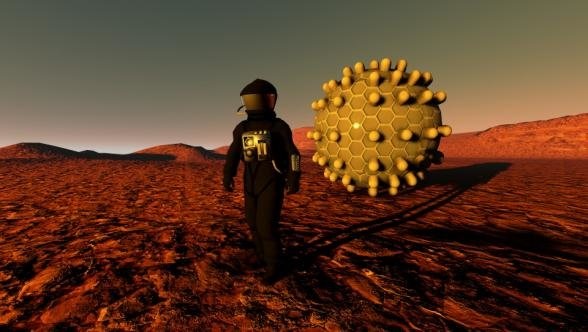
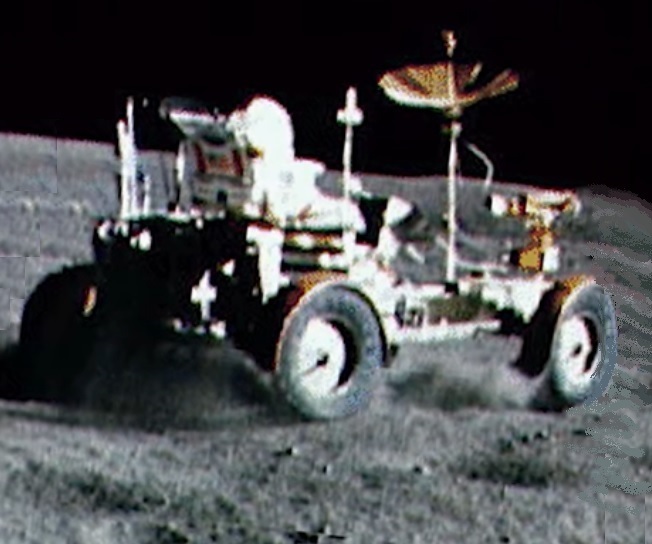
Prof. Kürsad Özdemir Assist.Dr.tech. Dept. of Architecture at MEF University produced a paper on Fostering the endeavor: Architecture education for planetary exploration.4 He writes ‘A planetary human outpost is no longer out of the scanning range of the architects.’ I am reminded of the Lunar Rover (LRV) which NASA astronaut Charles Duke, navigator of the Lunar Roving Vehicle (LRV) on the Apollo 16 mission describes how the rover handled on the lunar surface as ‘bouncy’5
References
- En.wikipedia.org/wiki/Brunsvgia bosmaniae
- South African National Biodiversity Institute
- “Alkaloids of the amaryllidaceae: Brunsvigine” – Tetrahedron, Volume 31, Issue 16, Pages 1855-1859 – R.C. Clark, F.L. Warren, K.G.R. Pachler
- Özdemir, Kürsad. (2012). Fostering the endeavor: Architecture education for planetary exploration. Proceedings of the International Astronautical Congress, IAC. 13. 11013-11018.
- NASA astronaut Charles Duke was the navigator of the Lunar Roving Vehicle (LRV) on the Apollo 16 mission at the 115th Explorers Club Dinner in Mar. 2019.
posted 3rd Jan. 2020 by Ian McKay Nunn
